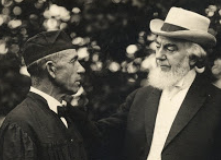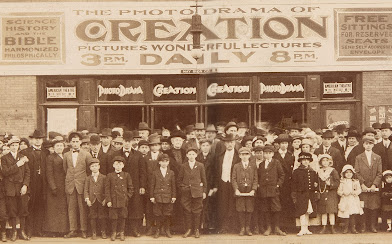As well as the haberdashery stores, the Russells (Joseph Lytle and son Charles Taze) were involved in various business ventures, some of them detailed in the booklet A Conspiracy Exposed (1894). One of the more unusual ones was music publishing. While long forgotten today, it is curious that it was mentioned in a court case in 1913.
The case was the famous 1913 Russell vs. Brooklyn Eagle trial, generally known as the “miracle wheat” trial. In a review of Russell’s various business ventures, W E Van Amburgh included a music business. The reference is in the transcript on page 320, section 959.
Van Amberg (sic) did not become a director of the corporation until 1901, and this exchange took place in 1913. He would have had no first-hand knowledge of the Russell stores. Yet out of all of the past business ventures it is curious that the music store should still be referenced.
The one known example of the Russells’ connection with the music business dates from more than 40 years before, from 1872. The book Separate Identity Volume 1 by Bruce Schulz and Rachael de Vienne reproduced the cover of The Evening Prayer, a piece of sheet music written by Blessner and Pershing for a local Pittsburgh college.
If you examine this facsimile of the cover, you can see the music was published by J. L. Russell and Son of the Pittsburgh Music House. The full document with words and music can be accessed from the Library of Congress website for any who really want to see what it is like.
The words were written by Rev. Dr. I. C. Pershing of the Methodist Episcopal Church and President of the Pittsburgh Female College. The music was by G. Blessner.
It was dedicated to the Rev. Bishop M. Simpson (1811-1884) who was president at one time of the M.E. Church Missionary Society.
The Pittsburgh Female College was founded in 1854.
Although it was described above as a sectarian institution under the control of the Methodist Episcopal Church, their charter stipulated that students were to be accepted from all religious denominations.
The Rev. Israel C. Pershing (1826-1898) became principal of the college around 1860 and remained so until 1886 when he was accused of fraud.
Gustave Blessner (1808-1888) was head of music in the 1870s, and the college had a choir and put on musical concerts.
Blessner was a highly prolific composer and a lot of his music can still be accessed today. It covered a wide spectrum, from the Sacred (To Thee We Pray – 1879) to the less than sacred (Silly Dilly Dally Dolly – 1872). One of the latter oeuvre, Nanny’s Mammy (1850) starts off…
A spinster of uncertain age
(But somewhat past the middle stage)
Who thought herself extremely sage…
You get the picture. There are shades of Gilbert and Sullivan here.
Blessner’s modern claim to fame is that he wrote the music for the first known song to have the word “Blues” in the title: “I have got the blues today” (1850). The chorus goes:
I was the gayest of the gay
But I have got the blues today.
It’s about a singer who gets drunk.
Of course in these instances Blessner wrote the music but was not the lyricist.
However, one wonders if his music lessons at the straight-laced-ladies-only M.E. College were sometimes rather fun.
Anyhow, although a great amount of Blessner’s music was published and can be found online, the Evening Prayer is the only composition so far found that was published by the Russells, and then only in tandem with other music publishers. It could be it was the only item they did publish, maybe because it was a local item sung by the college choir for one of their concerts.
Pittsburgh Daily Post (Pittsburgh, Pennsylvania) 16 Dec 1872
But if anyone can find more examples, please do say.

















































